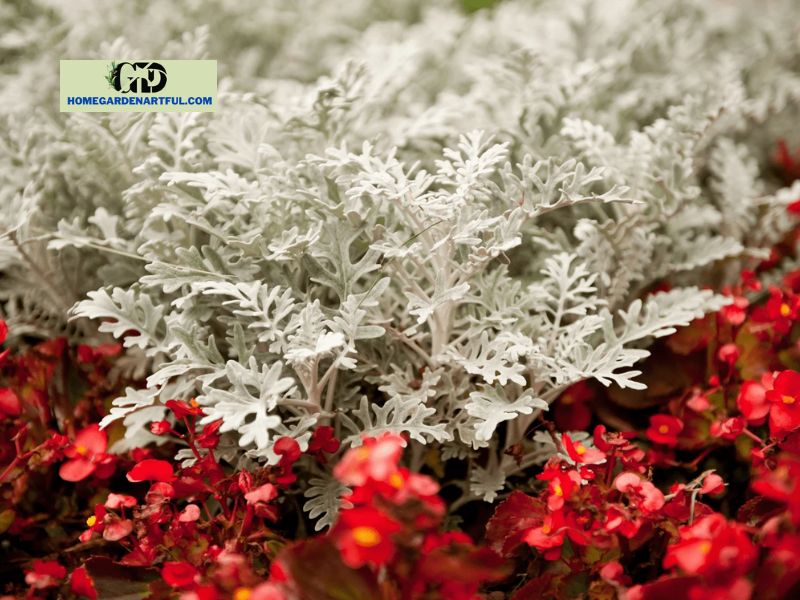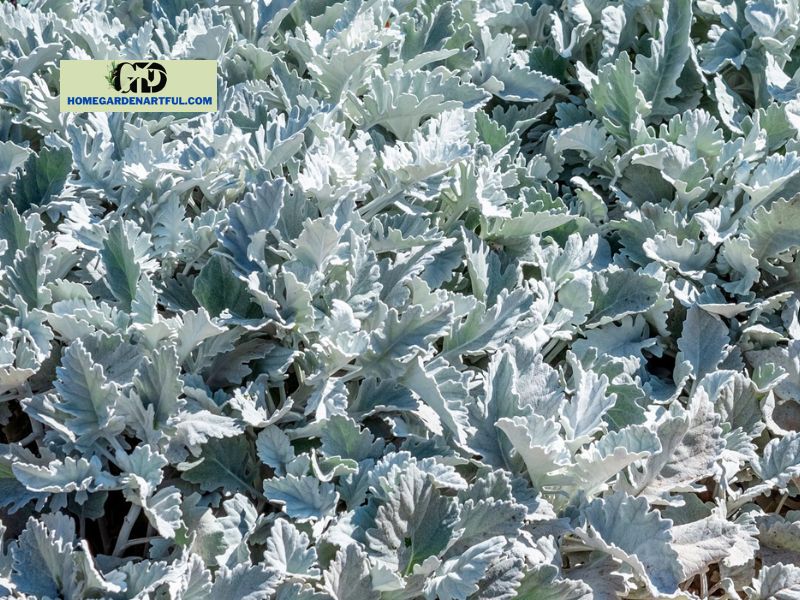Are you curious about Dusty Miller Companion Plants? Discover what to grow with dusty miller in this article, which discusses all of the best species to combine for a stunning garden bed.
Dusty Miller (Jacobaea maritime), additionally referred to as silver ragwort or silver dust, is a popular foliage plant variety in decorative gardens because the silvery tint of the leaves, combined with their soft and fluffy look, instantly adds contrast and texture to garden beds.
This plant has a wide range of applications. It can be used as a ground cover, filler plant, border plant, or backdrop for other low-growing perennial plants. Although the foliage has medicinal benefits, most people grow it for its attractive appearance.
This herbaceous plant is great for making the other plants in your garden stand out, and you can match it with a variety of companion plants, including those discussed in this article from homegardenartful.com.
Dusty Miller Planting Ideas

The dusty miller plant is commonly found in flowery garden types because its silvery leaves complement the color of the blooms. It is also an excellent plant to include if you want to bring more contrast to your lawn and flowers.
You should carefully select your surrounding plants to provide the most dramatic effect. Some plant varieties may be too tall, too similar in color, or too dominating to work alongside dusty millers, while others may just not thrive in the same conditions.
This silvery plant prefers direct sunlight, although it will take partial shade if planted in well-drained soil.
However, if placed in light shade, the plant will lose its silvery tint. It is ideal to grow this foliage in a location that receives at least 8 hours of direct sunlight every day and to select companion plants that can also thrive in this type of warm climate.
Dusty Miller Companion Plants

Let’s take a quick look at some of the greatest dusty miller companion plants to include in your garden bed if you want to make it stand out.
Petunias
Petunias are a fantastic companion plant for silver ragwort since they grow at a comparable height and produce gorgeous blooms that will stand out among the dusty millers.
Petunias come in almost any hue, and there are even types with distinct flower shapes, such as wave petunias or flat petunias. There are also scented cultivars that might assist you in creating an aromatic garden.
Petunias grow in USDA zones 10 – 11, and they require full sun to grow and flower. They are also drought-tolerant and can develop root rot if given too much water.
Dusty Miller and petunias can be blended in your flower beds to produce a dramatic look, and you can use as many different hues as you choose.
Ornamental Grasses
There are numerous ornamental grasses that can be used to create an appealing backdrop behind dusty millers. Some grass kinds are just as drought tolerant and tough as your millers, and you may choose from a variety of foliage colors; some even produce flowers.
Ornamental grasses are great for adding texture to your garden beds and look great in rock gardens. Consider the diversity when growing these companion plants with dusty miller. Taller grass varieties should be kept in the back and short clumpy variants should be established in the front.
Creeping Phlox

Creeping phlox is a suitable choice for growing in front of dusty miller plants because it is smaller in size, reaching a maximum height of only 8 inches. This ground cover is great for cool-toned gardens, and the purple flowers will add even more interest to the dusty miller growths.
When planting dusty miller, keep phlox in front of it because these lower plants require full sun as well as well-draining soil. Since it can reseed itself, this floral plant will swiftly spread over the garden.
Lavender
Lavender is a fantastic choice for any dry, sunny place in your garden and makes an excellent companion plant for dusty millers. Because they are so robust and can withstand a full day of full sun, both of these plants are frequently seen in rocky gardens or xeriscaping concepts.
Many gardeners enjoy combining these two species as the dusty green foliage of lavender complements the silver leaf of dusty millers.
When combining the two in the same garden bed, make sure to include lavender in the back. Dusty millers will grow a little shorter and are ideal for hiding the barren base of lavender shrubs.
Conclusion
Dusty Miller grows well with a wide range of companion plants, including petunias, creeping phlox, decorative grasses, lavender, and a number of other plants like pansies and violas.
We hope that this companion plants for dusty miller advice helped you choose some nice neighbors for your dusty miller plants.


